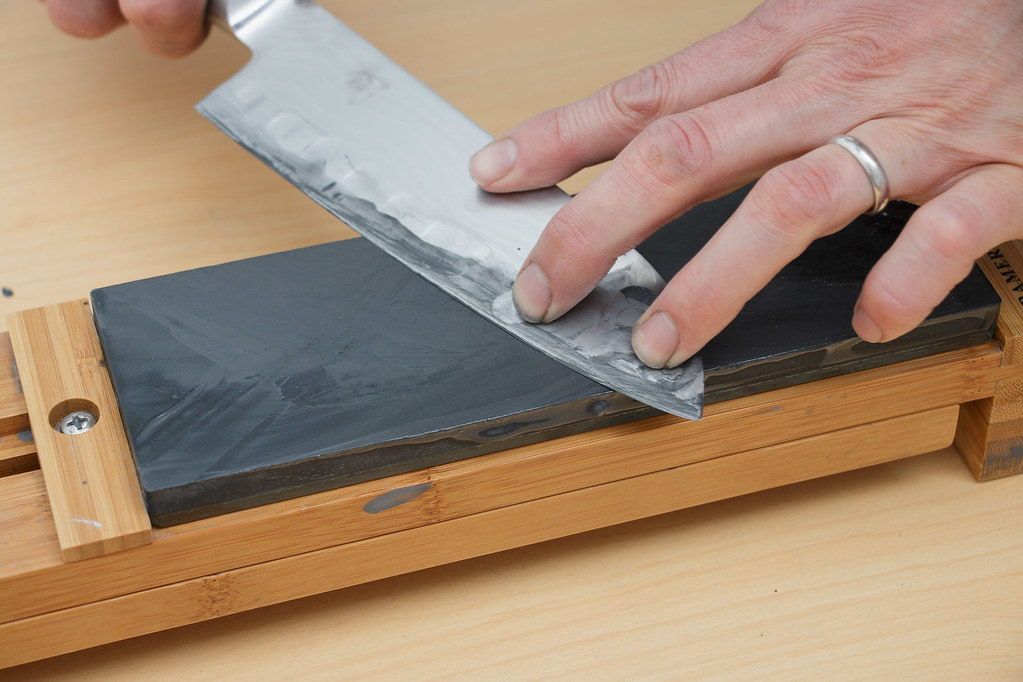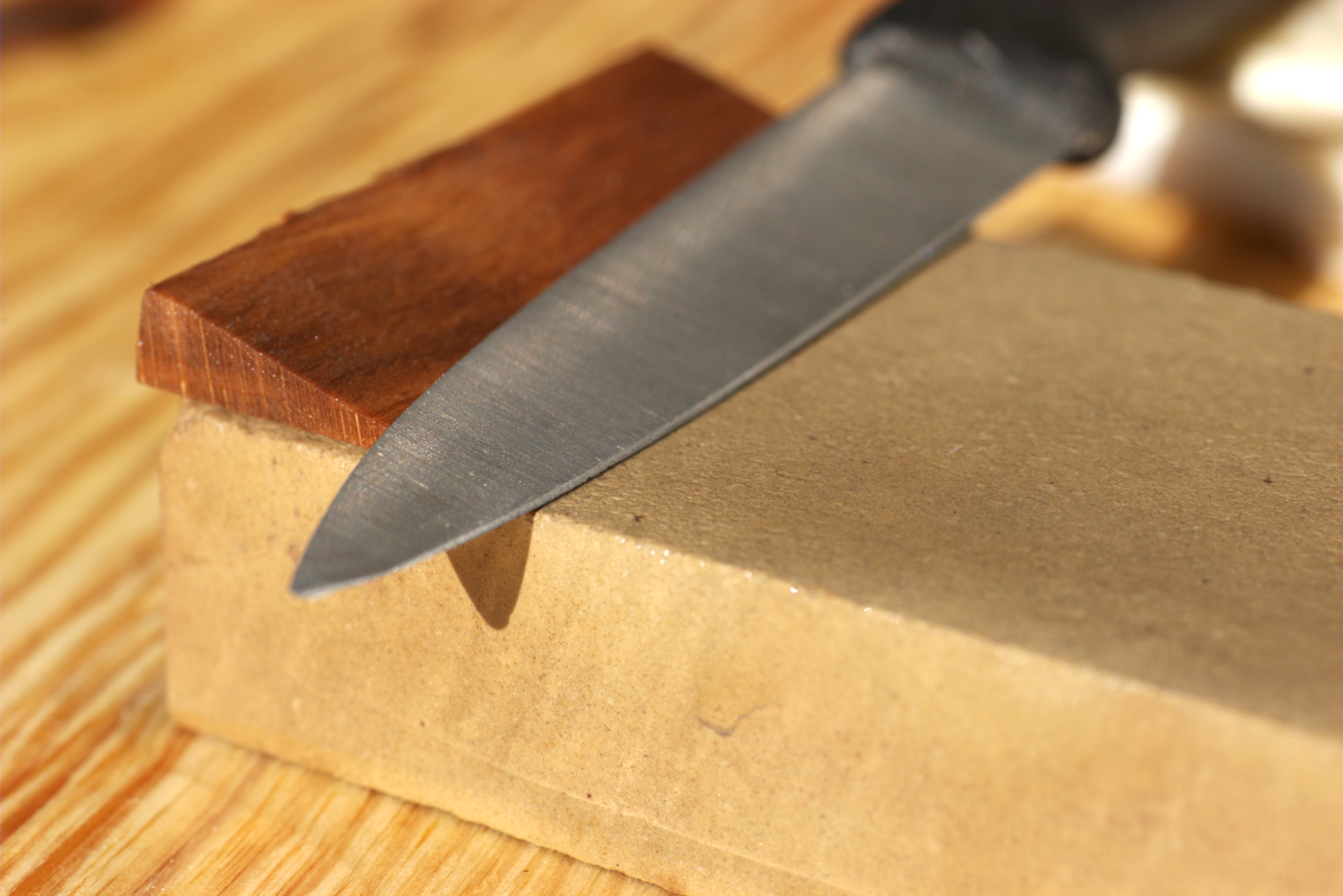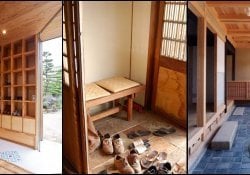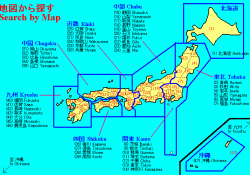One thing we see a lot in movies with swords and blades is their impeccable sharpening. Especially in movies with ninjas, where their weapons are extremely sharp. A good sharpening stone is needed to achieve this level of sharpening.
After all, swords need a high degree of cutting. We commonly see the japanese katanas cut bones like they were butter. Something that doesn't happen naturally after the forge. It takes an expert and a good sharpening stone.
And it is about these stones that we are going to do this article. What types, where do they come from, and highlighting the Japan Area. after all, the country has some stones that cannot be found in many places in the world. So let's get down to business.
Índice de Conteúdo
Hone

Sharpening stone, also called water stone or whetstone, the nomenclatures are varied. But the purpose does not change, they are used, of course, to sharpen the edges of steel tools.
A sharpening stone comes in many shapes, sizes and material compositions. Stones can be flat, for working flat edges, or shaped for more complex edges. They can also be composed of extracted natural material or man-made material.
Stones are generally available in various grades. These grades refer to the grain size of the abrasive particles in the stone. That is, the size of the bumps that are exposed on the surface of the sharpening stone.
The grain size is given as a number. This indicates the spatial density of the particles. A higher number denotes a higher density, hence smaller particles. Which in this case, leads to a finer finish of the surface of the polished object.
Sharpening stone and oil stones

Sharpening stones can be natural or artificial stones. Artificial stones usually come in the form of a bonded abrasive composed of a ceramic. Typically silicon carbide or aluminum oxide.
Bonded abrasives provide a faster cutting action than natural stones. They are commonly available as a two-sided block. One side with coarse grain, the other side with fine grain.
Natural stones are typically formed from quartz, such as novaculite. The Ouachita Mountains in Arkansas are noted as a source for this type of Quartz. Novaculitis is also found in Syria and Lebanon.
When the block is intended for installation on a bench, it is called a bench stone. Small, portable stones are called pocket stones. Being smaller, they are more portable than bench stones.
japanese waterstones
The Japanese traditionally use water-lubricated natural sharpening stones. Just to note, the Japanese have been doing this for many hundreds of years. The geology of Japan provided a type of stone that consists of fine silicate particles in a clay matrix. Which makes them a little softer than novaculite.
Japanese stones are also sedimentary. The most famous are usually explored in the district of Narutaki, north of Kyoto.
The article is still halfway through, but we recommend also reading:
Water stone classes
Historically, there are three general grades of Japanese sharpening stones:
- A ara-to or "gross stone"
- Naka-TO or "Medium/Median stone"
- The shiage-to or "final stone".
There is a fourth type of stone, the nagura, which is not used directly. Rather, it is used to form a cutting paste in shiage-to. In which it is often difficult to create the necessary folder.
Converting these names to absolute size is difficult, that is, there is no way to specify the density of the stone. After all, the classes are wide and natural stones do not have an inherent “number of particles”. Therefore, we will not delve into this issue.
Natural stones versus artificial stones
The use of natural stones for sharpening has declined. Because of the wide availability of high quality and consistent particle size artificial stones.
As a result, the legendary mines of Honyama Kyoto, Japan, have been closed since 1967. Modern synthetic stones are generally of equal quality to natural stones. They are often considered superior in sharpening performance.
After all, they are superior in terms of particle size consistency and control over stone properties. Natural stones are often prized for their natural beauty like stones and their rarity. This leaves them adding value as collector's items.
Another fact is that every natural stone is different. Thus, there are rare natural stones that contain abrasive particles. Which are in finer grain sizes than those currently available in artificial stones.
don't get carried away

Yes, the sharpening stone is essential for a good sharpening of the blades. But we have to remember that this is not enough to leave a sword with a spectacular edge. The right techniques are needed. The correct and exact movements. And a great experience not to lose the sense of sharpening in the process.
For example, if you sharpen on only one side, you lose a good part of the edge of the blade. And not only that, you need to know how a specific one needs to be sharpened. Choosing the necessary sharpening stone, and various other processes.
Of course, with practice and a lot of trying this can all be solved. But don't think you'll become a pro with just a few tries. But anyway, the journey of a thousand kilometers begins with the first step.
Now that you know a little about sharpening stone, you can go for a more in-depth study. Good luck, and if you have any questions, suggestions or anything like that, just leave your comment.
That's all we have for this article. Don't forget to share the site on social media, it helps a lot. Also, thanks for reading the article this far, until next time.







